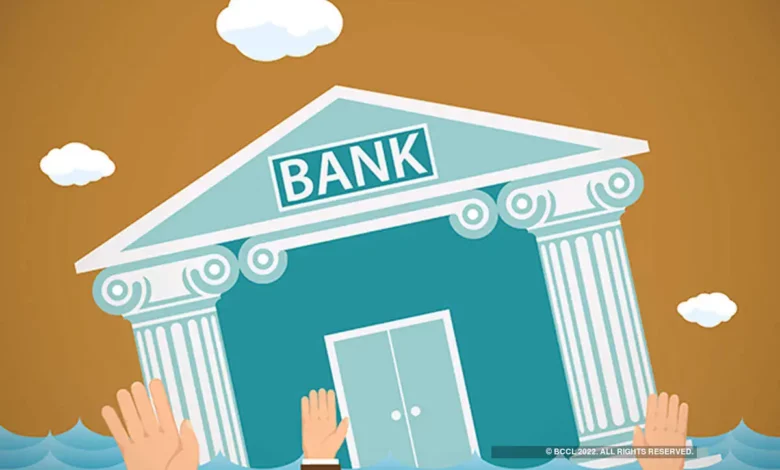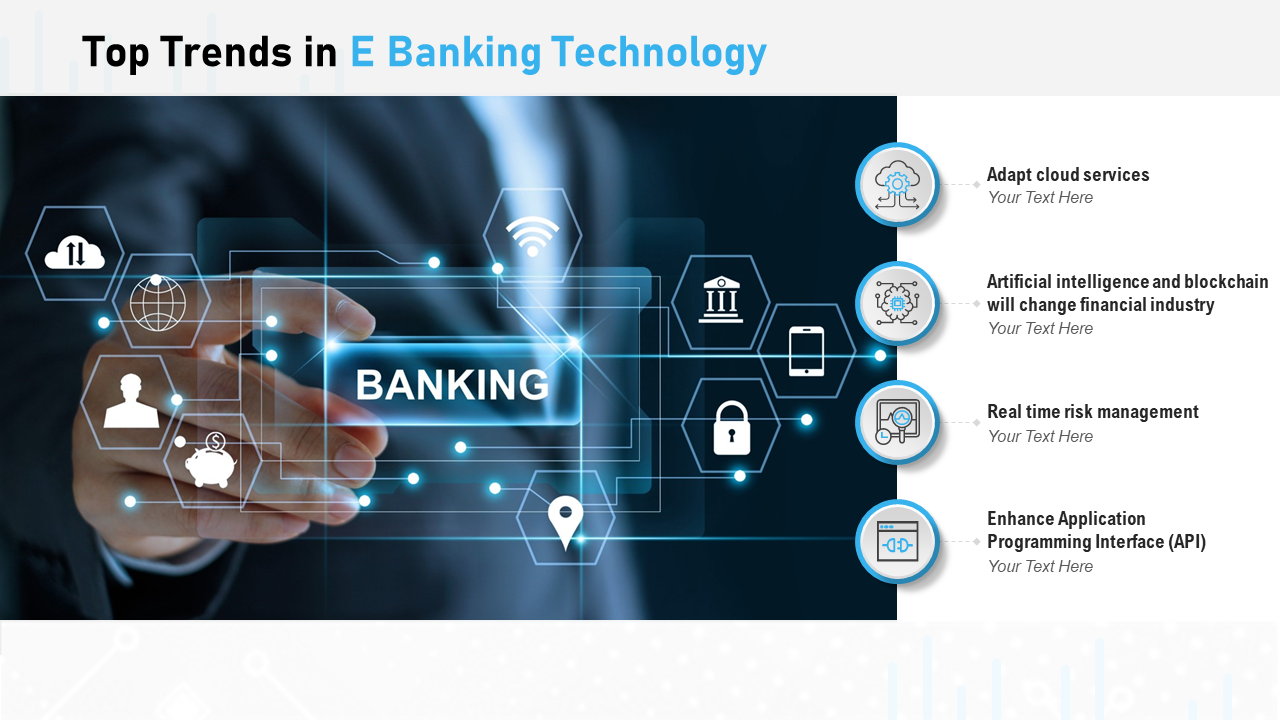What are the top 10 Banking Industry Challenges?

What are the top 10 Banking Industry Challenges?
The banking sector is going through a significant transformation fueled by increased competition from FinTechs, evolving business models, increasing pressure from regulations and compliance requirements, and disruptive technologies.
The advent of FinTech/non-bank firms is altering the financial services industry’s competitive landscape and prompting established institutions to reevaluate how they conduct business. Regulations and compliance obligations tighten as data breaches increase in frequency and privacy concerns grow. As if that weren’t enough, consumer demands are changing as they demand 24/7 individualized service.

The same technology that has produced this disruption can remedy these and other problems in the banking business. Still, moving from old-fashioned methods to cutting-edge ones hasn’t always been simple. Therefore, if credit unions want to not only exist but also grow in the current environment, they must embrace digital change.
Top issues affecting the banking and financial industries
There have been significant changes recently in the finance sector. These are the key topics that professionals need to be knowledgeable about.
1. New technologies that up the level of competitiveness
The rivalry for banking industry personnel is growing in two key areas:
- Customers no longer feel geographically constrained
Customers no longer have to visit the banks physically they intend to transact business with. The majority of their banking can now be done online. Thus there is now competition on both the domestic and global levels.
- Regardless of whether this particular bank has a branch nearby or not, customers instead search for the banking products and services that provide them with the most incredible deals.
- Digital capabilities facilitate the emergence of new banks.

The new competition can concentrate on offering only electronic access for the modern customer because they are no longer required to engage in developing a brick and mortar firm.
- To better understand consumer demands, take advantage of them, and build a bank that attracts customers, new banks can leverage the range of technical tools at their disposal, including machine learning.
- These digital solutions can also provide services at lower costs than more conventional type banks because they don’t require a physical location to run their business.
2. The banking industry is undergoing changes to its business processes and the dominant business culture
Customers now expect and value more significant digital links in their financial transactions due to the growing dependence on technology in many aspects of their everyday lives. This calls for modifications to the whole banking sector’s fundamental business model.
Convenience has become a prominent preference and expectation among consumers. They want to finish their work as quickly as possible, and the more they can accomplish using their intelligent gadgets on their schedule, the happier they are. These clients have started to look for technology solutions to the problems they frequently experience.
The banking industry has the opportunity to use more AI-based technology. This technology makes it easier to comprehend what clients demand in the banking sector and the procedures necessary to establish a solid reputation there.
Additionally, this technology can anticipate consumer behaviour and offer more individualized service throughout their interactions with the bank.

3. The influence of service quality is strengthened by shifting client expectations.
Customer expectations have started to evolve as these technological developments become more prevalent in consumer culture. Customers want banks to be able to interact with them through a variety of digital channels.
They want assurance that any social media messages or inquiries they make to the bank’s internet chatbot will be answered consistently and truthfully. They want to be able to contact the selected brand whenever they need to.
These customers demand personalized service in addition to being able to contact their preferred financial institution through these digital channels. They want to communicate with staff members who genuinely care about them as people and consumers. They want their interactions with the financial institution to demonstrate to them that the bank cares about their company.

The importance of personalization and high-quality service to modern consumers has even surpassed their commitment to brand loyalty. These consumers don’t have the same propensity as previous generations to have a real attachment to the companies they favour.
They seem more concerned with what a specific brand can offer them. As a result, there is a high incidence of churn and a complete absence of client loyalty.
Customers are less attached to the brand name and more attached to the services and experiences they have at the bank. Therefore, the financial institutions that succeed will know how to produce the experience that customers desire.
4. Failure to adapt to rapidly evolving technology
The rapidly changing nature of technology is also one of the banking sector’s main problems. Many firms find it a real challenge to keep up with the industry’s accelerated rate of evolution. Along with the technologies and capabilities, consumer expectations are constantly evolving.
Financial institutions tend to rely more on outdated systems and pay to fix them as needed rather than engaging in the techniques and abilities that their clients want to see. This is because they lack the resources necessary to adopt new technologies and software.
As they continue to provide just outdated systems and capabilities and fail to identify better alternatives, these companies enable themselves to lag behind the expectations of their customers.
Businesses that have trouble integrating new technology across numerous departments and systems frequently suffer from similar issues. Customers find it difficult to receive the individualized services they have grown accustomed to because the bank’s various departments operate more as independent units than as a cohesive whole. These banks are struggling to keep up with the demands of their customers in a world that is more connected to the internet.

The banks continue to crawl painfully along with their old-fashioned capabilities rather than looking for methods to enhance their technology and researching which modifications would significantly impact their capacity to provide clients with the services they desire.
5. Increased Expectations
The modern customer demands a high level of personalization and convenience from their banking experience because they are more intelligent, cleverer, and more educated than ever before.
These elevated expectations are significantly influenced by shifting customer demographics: Each younger breed of banking customers has a greater natural awareness of technology and, as a result, a higher expectation of digitized experiences.
Five out of six millennials say they prefer to communicate with brands on social media. A survey indicated that millennials also make up the most significant percentage of mobile banking users, at 47%. Millennials have been at the forefront of digitalization.
Based on this development, banks can anticipate that future generation future generations, beginning with Gen Z, will be even more tech-savvy and committed to omnichannel banking. In contrast, Baby Boomers and older Gen Xers seem to value interpersonal interactions and favour in-person branch visits.
This poses a particular problem for banks and credit unions: how can they please both older and younger groups of banking consumers at the same time? A hybrid banking strategy that incorporates digital experiences into conventional bank locations offers the solution.
If you will picture an actual branch with a self-service area where consumers may access their bank’s knowledge base by using the most cutting-edge intelligent devices.  If a customer needs more help, they can use one of these devices to make an appointment with a financial advisor at the branch; during the meeting, the advisor will address any questions the customer has and set them up with a mobile Amazon Alexa that can make additional recommendations based on their individual circumstances.
If a customer needs more help, they can use one of these devices to make an appointment with a financial advisor at the branch; during the meeting, the advisor will address any questions the customer has and set them up with a mobile Amazon Alexa that can make additional recommendations based on their individual circumstances.
The future branch currently exists and is assisting banks and credit unions in meeting and exceeding their customers’ growing expectations, despite the fact that it may seem too good to be true.
It’s also essential to take into account investor expectations. Annual earnings are a big deal because stakeholders need to know they’ll get their money back on their equity or investment, and for that to occur, banks need to really make money.
This relates to customer expectations because maintaining satisfied consumers is essential to long-term business success in a world that is becoming increasingly focused on its constituents. As a result, the happy your customers are, the more comfortable your shareholders will be.
6. Retention of clients

Customers of financial services demand simple, intuitive interfaces with tailored, relevant experiences available anytime, anywhere, and on any device. Customer experience can be challenging to measure, yet client churn can be seen, and the idea of customer loyalty is swiftly disappearing. Customer loyalty is the result of strong client relationships that start with getting to know the client and their expectations and by consistently putting the client first.
In a global study by Accenture Financial Services of close to 33,000 banking clients from 18 regions, 49% of respondents said that loyalty is influenced by customer service. Financial institutions can maximize interactions that lead to higher levels of customer satisfaction and wallet share, as well as a subsequent decline in customer churn, by getting to know their customers and communicating with them properly.
One innovative technology that financial institutions can utilize to provide better customer support is bots. Bots are a practical approach to boosting customer engagement without adding to expenditures, and studies suggest that most customers prefer virtual support for prompt problem-solving.
Bots can naturally engage clients, naturally conversational and contextual as the first point of contact, speeding up resolution times and enhancing customer satisfaction. By recognizing emotional indicators, sentiment analysis enables bots to understand the context and collect information from conversations. With this knowledge, they can quickly analyze, escalate, and send complex problems to people for resolution.
7. Old-fashioned Mobile Experiences
Every bank and credit union now has its brand mobile application, but just because a company has a mobile banking strategy doesn’t guarantee that it’s being used to its fullest potential. In order to maintain customer satisfaction, a bank’s mobile experience needs to be quick, simple to use, fully equipped (think live chat, voice-enabled concept, and the like), secure and frequently updated.
By enabling mobile payment features, some banks have even begun to rethink what a banking app might be by allowing users to use their cell phones as safe digital wallets and send money instantaneously to family and friends.
8. Breaches of Security
Security is one of the top issues and concerns facing the banking industry as a result of a number of high-profile breaches in recent years, and it is also a top worry for bank and credit union consumers.

- Address Verification Service (AVS): AVS “checks all of the billing addresses submitted by the card user with the cardholder’s billing address on record at the financial institution” to identify fraudulent activity and stop fraud. Financial institutions must invest in AVS and other cutting-edge technology-driven security steps to protect sensitive customers.
- End-to-End Encryption (E2EE): E2EE is a secure communication technique that shields data from prying eyes as it is sent from one end computer or application to another.
E2EE encrypts and decrypts private messages using cryptographic keys that are kept at each endpoint. To ensure that money is transmitted securely from one account to another or from a client to a store, banks and credit unions can utilize E2EE to safeguard mobile payments and other online payments.
- Authentication: “Biometric authentication” is a security procedure that depends on a person’s distinctive biological traits to confirm that he is who he claims to be. Biometric data captures are compared to data verified as legitimate and kept in a database by biometric authentication systems. Examples include voice and facial recognition, iris, fingerprint scanning, and other popular biometric identification methods.
Since biometric authentication is more difficult to duplicate and is more secure, banks and credit unions can employ it in place of PINs.

Location-based authentication, also known as geolocation identification, is a specific method for establishing a person’s identity and integrity based solely on their outward appearance. By either sending a push notification authorizing a transaction to a customer’s mobile device or triangulating the customer’s location to ascertain whether they are in the same area as the transaction is taking place, banks can use location-based verification in tandem with mobile banking to detect theft.
A technique where authentication involves two distinct signals from two different networks or channels is known as out-of-band authentication (OOBA). Systems for authentication can prevent fraudulent users who might only have a connection to one of these channels by using two distinct channels.
The customer enters the one-time security code to access their account and confirm their identity after a bank uses OOBA to produce it and send it to them through automated voice calls, SMS text messages, or email.
Risk-based authentication (RBA), often referred to as adaptive authentication or step-up authentication, is a technique for applying various levels of stringency to involves testing based on the chance that access to a specific system could lead to its penetration.
While technologies like the blockchain may still be too immature to realize significant returns from their implementation in the near future, technologies like cloud computing, AI, and bots all offer substantial benefits for institutions looking to reduce costs while improving customer satisfaction and growing wallet share.
Cloud computing via software as a service and platform as service solutions enable firms previously burdened with disparate legacy systems to simplify and standardize IT estates. In doing so, banks and credit unions can reduce costs and improve data analytics, all while leveraging leading-edge technologies.
AI offers a significant competitive advantage by providing deep insights into customer behaviours and needs, allowing financial institutions to sell the right product at the right time to the right customer. Additionally, AI can provide key organizational insights required to identify operational opportunities and maintain agility.

9. Omnichannel Reality
Omnichannel marketing has entered its era thanks to digitization. Financial businesses must contend with a market that demands a seamless user experience across all channels pertinent to the buyer’s journey. Compared to those using a single track, marketers who used three or more channels in a single campaign had a 287 per cent greater conversion rate.
The only issue is that implementing a successful omnichannel marketing plan is quite difficult and expensive. The biggest challenge to multichannel marketing, aside from a lack of expertise, fundamentally new technology, and data handling and analytics capabilities, according to Marketing Sherpa, is a lack of funding.
Therefore, should financial brands disregard omnichannel? Without a doubt. They can include channels into an omnichannel approach by following these steps.
10. Continuous Innovation
In order to succeed in business, one must have insight, flexibility, strong client relationships, and ongoing innovation. Banks and credit unions can stay competitive by comparing their operations to other companies’ best practices.
However, benchmarking on its own only helps organizations stay competitive; it rarely results in innovation. According to the cliche, businesses must baseline to survive but adapt to thrive; innovation is a crucial differentiator that distinguishes wheat from the chaff.
Innovation is the result of insights, which are found through interactions with customers and ongoing organizational analysis. However, knowledge without action is useless. Therefore, financial institutions must be ready to change course as necessary to meet market demands while enhancing the client experience.

Organizations providing financial services that are utilising the most recent business technology, particularly in the area of cloud apps, have a crucial advantage in the fight for digital transformation: they can innovate more quickly. The flexibility and scalability of cloud technology are its key strengths. Cloud technology makes it possible for systems to expand alongside your organization without being constrained by system hardware.
One typical remedy
The top 4 challenges for financial institutions in 2021 have a standard solution, despite their many distinct risks: efficient process management. Process management, however, is still too frequently neglected. When the car’s beautiful curves or zero-to-sixty performance are the only things that can claim bragging rights, it’s the reinforced steel structure inside the vehicle.
Many banking leaders encounter difficulties when they overlook the crucial role that processes play in business transformation because they are the fundamental framework that propels change in the industry. It is challenging to scale and grow, react to market changes, satisfy consumers, comply with the rules, or take on any of the aforementioned challenges in a company with a weak process culture.
Using the correct tools to scale up
The greater the enterprise, the more crucial documentation is. Thus, scaling without a solid process foundation is like scaling up from homecooked meals to a restaurant without instructions or a menu.
Using mergers as an example, businesses must map the networks of two institutions to consolidate consumers, create standardized processes that link the systems of record of both organizations, and make decisions and processes visible to business analysts. These procedures swiftly demonstrate an organization’s strength based solely on its process capabilities.

The right set of process management tools can make sure that banks, insurers, and financial services organizations can defend against digital challengers by taking advantage of their benefits in size, institutional maturity, and brand recognition.
They can also adjust to changing customer demands and new business prospects by reevaluating their business plans.
After all, processes are what separate turning a profit from winging it is heavily regulated, process-driven industries like banking, financial services, and insurance. Download our white paper on the issues facing the banking, financial services, and insurance leaders in 2021 to learn more about these types of paradoxical decisions.
It’s time financial marketing followed the upheaval and digital change occurring in the financial services sector. If FSBs are to succeed in the post-digital era, they must integrate digital technology beyond its current status as an auxiliary instrument.
FSPs may build a unified financial services market strategy that wards off rivals, appeals to digital-first customers, and helps the business survive and prosper in a digitized age by integrating technology across all departments, not just in marketing.
edited and proofread by nikita sharma




